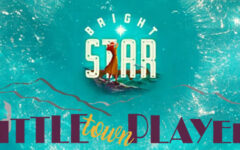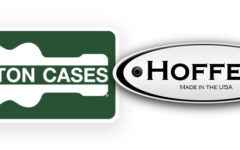 In the latest edition of the County Sales Newsletter, #290, David Freeman, the founder of the longstanding and illustrious retail outlet “for bluegrass, old-time and authentic rural music”, is in a nostalgic mood, telling his readers how it used to be when County Sales, then based in New York City, was started in 1965. Those were the days of vinyl folks! Warm, analogue music! And there wasn’t very much of it about!
In the latest edition of the County Sales Newsletter, #290, David Freeman, the founder of the longstanding and illustrious retail outlet “for bluegrass, old-time and authentic rural music”, is in a nostalgic mood, telling his readers how it used to be when County Sales, then based in New York City, was started in 1965. Those were the days of vinyl folks! Warm, analogue music! And there wasn’t very much of it about!
Here’s what David Freeman has to say in his Newsletter ‚Ķ‚Ķ‚Ķ‚Ķ.
“As we enter our 43rd year of selling Bluegrass and Old-Time music, we thought it was a good time to reflect back on some of the changes that have occurred since we put out our first few Newsletters back in 1965 and 1966. At that time‚Äîwhen it only took a 6 cent stamp to mail our Newsletter, and just 15 cents postage to mail 2 LPs anywhere in the USA!‚Äîthere were hardly enough new releases (vinyl LPs) to fill up even two or three pages of space every couple of months. We can’t recall the existence of any significant books about the music at the time, and there were no such things as DVDs or VHS tapes. We scrambled to find news about Fiddlers’ Conventions and even word of future LP releases‚Äîthere were probably not more than 25 or 30 Bluegrass LPs on the market then, and the revival of interest in “Old-Time” music was in its infancy.
In contrast, there is a wealth of great items available today: more good records than we can keep up with, a bunch of amazing DVDs, and in the last two issues alone, 3 or 4 excellent books (in short, more items in one month than we had to offer in the first 2 or 3 years of COUNTY SALES’ existence combined!). What has accounted for the rise in popularity of this wonderful rural American art form that we love? A music that was once mostly associated with sleazy bars and honky tonks, and dismissed by many as inferior, low-life “hillbilly” trash has finally gained a significant measure of respect, and is now a healthy, family type pursuit. The early Bluegrass Festivals, “Dueling Banjos”, “Bonnie & Clyde” and “O Brother Where Art Thou” all have helped greatly in gaining exposure for Bluegrass, but we owe special thanks to the early pioneers who brought respect to the music through their writing & promoting: people like the late Ralph Rinzler, Bill Vernon, and Charles Wolfe, and those still involved today like Bill Malone, Neil Rosenberg, Lance Leroy and Mike Seeger. And a special thanks to all those festival promoters who have insisted on keeping their events clean and family oriented, after a flurry of ill-conceived, rock-based “peace, love, & Bluegrass” fiascos in the early 1970s almost brought an early end to what is now a very healthy phenomenon.”
I thought that this was a subject that warranted further discussion ……….
You mentioned vinyl (LPs) …. what about 45rpm discs? Were you selling many of those in the early days?
In the early days we did sell a few 45s, and some EPs that some Bluegrass artists had out before they could afford to do a full LP or find some label willing to do that for them. I do recall selling quite a few of some EPs that were put out on the Jalyn, Jewel and Rem labels (Esco Hankins & Jackie had some really nice sides on Jewel), and there was Jimmy Murphy and Molly O’Day (as well as others) on Rem. We also sold quite a few Blue Jay (J.E. Mainer, Joe & Janette Carter) and MKB label items, as I had got to know the owners of these labels pretty well (Mr. Butner of MKB in North Carolina, and EP. Williams of Blue Jay in Salisbury, NC. And there were also some nice fiddle EPs out of Missouri & Texas by artist like Lonnie Robertson, Pete McMahan etc.
What were popular items (LPs) ? (Singles/45s) ? in the early days?
Some of the first really big sellers we had were the “budget” LPs that started coming out on the Camden and Harmony labels (Carter Family, Bill Monroe, Flatt & Scruggs, Molly O’Day, etc). As I recall, we bought these for $ 1.,25 and sold them for $ 1.75 each‚Äîthey were great value & great music. Some of the early full price records that we sold really well in our first couple of years were the Decca “Knee Deep In Bluegrass” and Instrumentals LPs, along with the Decca Uncle Dave Macon and Carter Family LPs. (Full price LPs we sold for $ 3.75 each)
What are popular items today?
Some of the most popular items of the past couple of years have been the Flatt & Scruggs DVDs from their Martha White TV shows of the early 1960s. Big sellers among today’s artists include Rhonda Vincent, Del McCoury and IIIrd Tyme Out , and of course Alison Krauss. In between our early days and the present, we probably have sold more Stanley Brothers, Ralph Stanley and Flatt & Scruggs records than anything else‚Äîalso Seldom Scene and Country Gentlemen and Bill Monroe. And we have sold literally thousands of old time CDs by Charlie Poole, Gid Tanner and Uncle Dave Macon.
You spoke of postage …. What does it cost to mail 2 LPs (or equivalent) to US customers these days?
When we started, there was a special rate for books & sound recordings—10 cents for the first pound and 5 cents each additional pound, so 2 or 3 LPs could be shipped for 15cents—today the same parcel is around $ 2.80. And a cardboard mailer that cost us 7 cents in 1965 is now around 40 to 45 cents.
When did County Sales begin to get orders from outside of America? What differences are there in international shipping then and now?
We were dealing with international shipping right from the start. As a matter of fact, that is how we really got started into the business full time, by taking over supplying American country LPs to European customers for a British country music magazine (Country News & Views) that had such a service but then lost its USA supplier in Nashville. So we took over, sending parcels to the British Isles and other European countries, while building up our own business in the USA (mostly from classified ads in the Nashville Music City News Newspaper, at first). We also got a lot of customers by word of mouth and we had a small but solid group of collectors who bid on my auction lists‚Äîmany of them became customers of County Sales when they found they could get current LPs from us at discount prices. I forget the exact rates, but in our early days we could send records overseas very reasonably by using the “Small Packet” rate back then‚ÄîI think it was between $ 1 and $ 2 to send 2 LPs overseas at that time. Now it costs a minimum ofd $ 11.00 to ship anything overseas, and most of the packages we send to Japan and Australia are as much as $ 25.00 or more.
Of course the big issue of the day is digital downloads and you offer that; when did you begin to do so? Is this part of the County Sales operation or is it direct Rebel/County business?
County Sales does not offer any digital downloads at this time. But just about all of our Rebel and County Records catalogs are available for download through i-Tunes, e-music, Geneva, Musicnet and other similar services, and eventually will be available directly from our Rebel Records web page and projected County Records site as well.
What other aspects of the computer age helps County Sales business? Stock control/ordering? Advertising? Communication (When did you first put your (a) catalogue and (b) Newsletter on the web)? Otherwise?
We bought our first computer in 1983, a year or so before Rebel Records issued its first CD (REB-1101, Best Of The Seldom Scene). Both were hugely expensive items for us at that time (we had to take 3500 of the CDs, master the disc in Holland at a cost of over $ 2000.00, press the CD in Japan and pay for shipping to USA, and the price per CD was about 5 times what it is today!), but we felt they were both here to stay and we got into them as early as we could. I think we were also one of the first minor independent labels (Rebel) to get our full catalog on i-Tunes.
It’s hard to believe, but all through the 1960s and 1970s we were typing up mailing labels for several thousand customers every 6 weeks for our Newsletter. Our first computer cost us over $ 4,000.00, and was probably about one fiftieth as powerful or efficient as what we have now‚Äîbut it paid for itself many times over before we upgraded. For one thing, we are able to get an inquiry from a customer overseas, reply back quoting prices, then receive an order from them with payment by credit card, and mail their records to them all within less than an hour: in the “old” days those 4 back & forth transactions might have taken 3 or 4 weeks!
We are (very) far from the most computer literate people, but it’s amazing what the computer has done for our business! (I can’t recall the year that our newsletter first went on the computer, but Burgess Hurd would know, as it was with his help and prodding that we made the jump to creating a web site.
I clarified the situation with Burgess, who has done graphics and online work for Rebel and County for more than 10 years ………………
I contacted Dave about a web site in October, 1996, and began working on the site. About March of 1997 we went live and a job opened up within the company and I started working for him full time.
He had been approached earlier by others to make the County Sales operation available on the web. There may have been an issue with a large expense that caused the previous reluctance as in the beginning of e-commerce the software was very expensive.
I started making the site showing him the progress as I went along. He had not committed, signed anything, contract etc, but as it went along he warmed to the idea and after we got a working order form it became a matter of entering the product and making updates. The company did have the mailing list on the computer and the royalty information for the record labels was on 5″ floppies. This could have been the 1990 date Dave was referring to.
Gary Reid was making some of the County Sales catalogs on the computer before I started with Dave, Old Time, Bluegrass, Gospel, Instrumental, Fiddle, and these were the models for the web site. There was a nice Dell computer, a postscript printer and a HP scanner when I started with Dave but I don’t know how long he may have had them.
The newsletter was up on the web from the beginning as it was a prime selling feature, however there were not “buy now -shopping cart” links until we changed software and service providers. One of the earliest newsletter heads I can find in my files is # 233 – August 1999. With computer crashes and service provider changes some of the earlier editions are no longer available.
As a Post Script I made a rather parochial enquiry, reflecting my own experiences ……..
I bought most of my bluegrass music in the early days through Mike Craig in Scotland; did you supply him? Was that through County Sales or Record Depot?
Yes, after County News & Views went out of business, Mike Craig got in touch with me and started his own import service, with us as one of his wholesale suppliers, an arrangement which kept up until a few years ago when Mike decided to retire from the record business. We keep in touch and Mike visited us here in the states several times. It seemed like he did a lot for Bluegrass and country music in Scotland and all over Great Britain.
Footnote —
This really deserves more than a footnote remark to a long article but I hope that you have read this far.
In the Newsletter, David Freeman passed on this bit of information about an important member of his staff for many years ……
“All of us at County Sales want to wish WANDA DALTON a very happy retirement. Wanda handled our foreign order department and was an invaluable member of our staff for over 32 years. Wanda, who really knows and loves Bluegrass music, retired at the end of 2007, and we have already received many calls from customers who miss hearing her voice!”
Happy Retirement Wanda!







